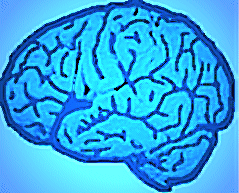
Neuroscience: A Journey Through the Brain
 |
Neuroscience: A Journey Through the Brain |
| Main Page Organization Development Neuron Systems About the site (Glossary) References |
The Neuron: Basic Unit of Function
To study the structure of brain cells, scientists have had to overcome several obstacles:
1. Small size: Most cells range from 0.01 to 0.05
mm in diameter
2. Slicing: In order to view cells under a microscope, the ideal
thickness of a brain slice is the thickness of the cells themselves. The tissue
is not firm enough to make such slices. Early in the 1800's, scientists
discovered that formaldehyde could be used to harden (or "fix")
the tissue without damaging it, and a device called a microtome was
developed to make thin slices.
3. Pigmentation: Freshly prepared brain tissue is uniform in colour, and
it was difficult to resolve individual cells. The final breakthrough in this
field called Histology was the development of staining procedures that
selectively colour some, but not all, part of the neurons.
Methods of study include:
Created and Maintained by: Melissa
Davies
Last Updated: April 10, 2002 08:57 AM